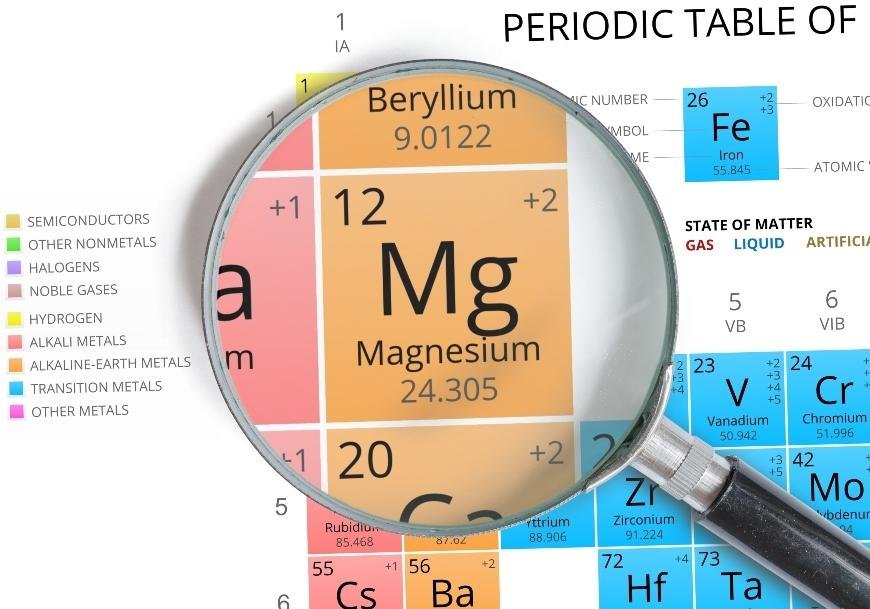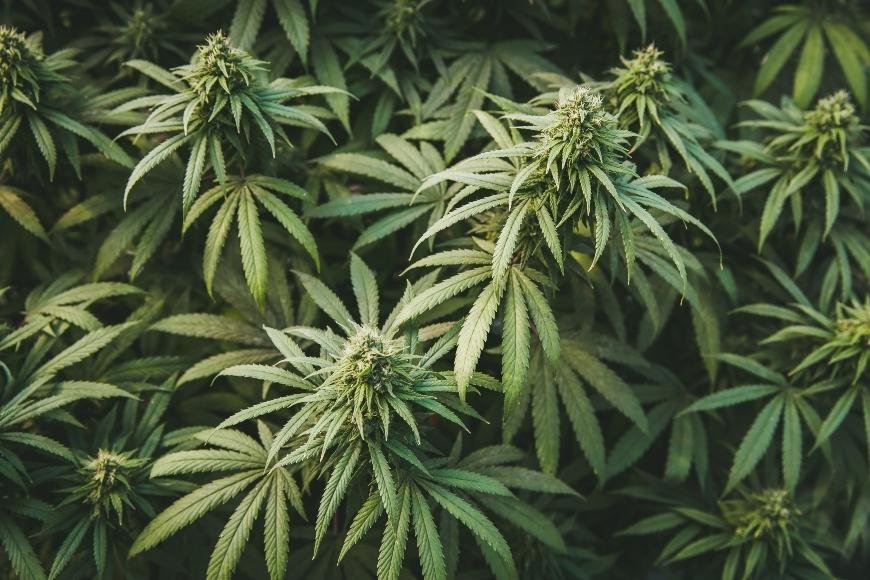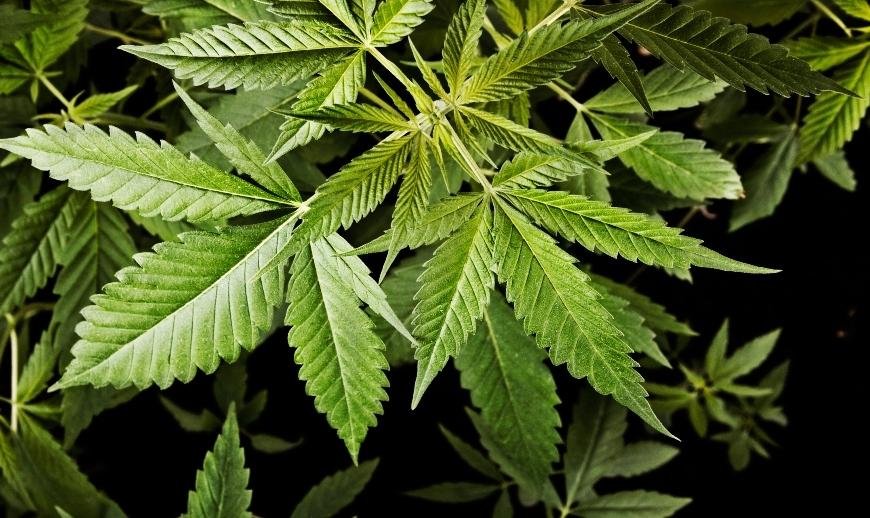Magnesium for Cannabis Plants
Explore Magnesium for Cannabis Plants: identify deficiency symptoms, learn prevention methods, and find solutions for healthy marijuana growth.

Magnesium for cannabis plants plays a crucial role in ensuring healthy growth and optimal yields. Magnesium is an essential element for cannabis plants, being integral to a variety of processes that promote their health and wellbeing. In this guide, we will delve into the importance of magnesium for cannabis plants and how to avoid or treat deficiencies.
From its vital function in chlorophyll synthesis and photosynthesis to its impact on carbohydrate and protein production, understanding the significance of magnesium for cannabis plants can help you achieve thriving crops. We will also delve into common symptoms associated with magnesium deficiency as well as methods to restore proper nutrient balance after overwatering or other issues.
Lastly, we'll touch upon recognizing and addressing potential cases of magnesium toxicity – because while it's important to provide adequate levels of this essential nutrient, excessive amounts can be detrimental too. So buckle up and get ready for an informative journey through the world of cannabis nutrients!
Table of Contents:
- The Importance of Magnesium for Cannabis Plants
- Role in Chlorophyll Synthesis and Photosynthesis
- Impact on Carbohydrate and Protein Production
- Symptoms of Magnesium Deficiency in Cannabis Plants
- Preventing Magnesium Deficiency During Growth Cycle
- Methods to Treat Magnesium Deficiency
- Flushing Roots & Restoring Nutrient Balance After Overwatering
- Recognizing & Addressing Magnesium Toxicity in Cannabis Plants
- Frequently Asked Questions Magnesium for Cannabis Plants
- Conclusion
The Importance of Magnesium for Cannabis Plants
Magnesium is an essential macronutrient that plays a vital role in various plant processes, such as photosynthesis and the production of carbohydrates and proteins. It's crucial for cannabis plants to have adequate magnesium levels to maintain healthy growth throughout their lifecycle.
Role in Chlorophyll Synthesis and Photosynthesis
Magnesium is a key component of chlorophyll, which gives plants their green color and enables them to carry out photosynthesis. This process allows cannabis plants to convert sunlight into energy, which fuels their growth. Without sufficient magnesium, the efficiency of photosynthesis decreases significantly, leading to stunted growth or even death.
Impact on Carbohydrate and Protein Production
Besides its role in chlorophyll synthesis, magnesium also plays a critical part in the production of carbohydrates and proteins within cannabis plants. These compounds are essential building blocks that help with cell development during both vegetative growth stages as well as flowering phases when buds form. A lack of available magnesium can result in reduced yields due to decreased carbohydrate reserves needed for bud formation or insufficient protein synthesis required for proper cellular function.
In addition to these primary roles, maintaining optimal cannabis nutrients, including magnesium levels, helps prevent potential issues like nutrient lockout caused by imbalances between different elements present within growing media (soil or hydroponic systems). By ensuring your marijuana plants receive all necessary nutrients in proper amounts, you can avoid common problems like cannabis magnesium deficiency and promote healthy growth throughout their life cycle.
To ensure your cannabis plants receive the right balance of essential nutrients, including magnesium, it's important to monitor their health regularly and make adjustments as needed based on visual cues or other indicators such as leaf tissue analysis results. By doing so, you'll be able to maintain optimal growing conditions for your weed plants while avoiding potential issues related to nutrient imbalances or deficiencies that could negatively impact overall yields.
Magnesium is an essential nutrient for cannabis plants, as it facilitates chlorophyll production and drives photosynthesis processes. Without adequate magnesium levels, the plant will suffer from decreased carbohydrate and protein production. However, if there is too little of this nutrient available to the plant then symptoms such as interveinal chlorosis may occur - so it's important to know how to spot them.

Symptoms of Magnesium Deficiency in Cannabis Plants
Recognizing the symptoms of magnesium deficiency is key to maintaining optimal cannabis plant health. Common signs include yellowing leaves with green veins (interveinal chlorosis), foliage pointing upward, and dark brown or black spots on leaves followed by a crunchy texture and dryness. Let's take a closer look at these symptoms:
Yellowing Leaves with Green Veins (Interveinal Chlorosis)
The most noticeable sign of magnesium deficiency in cannabis plants is yellowing leaves with green veins, also known as interveinal chlorosis. Magnesium, essential for the formation of chlorophyll - the pigment that gives plants their green hue - is deficient when yellowing leaves with green veins (interveinal chlorosis) appear. When there isn't enough available magnesium, the plant can't produce sufficient amounts of chlorophyll, leading to yellowed leaves while still retaining their green veins.
Foliage Pointing Upward
Magnesium deficient marijuana plants may exhibit foliage that points upward due to its impact on cell structure within leaf tissue. The lack of proper nutrients causes cells near leaf edges to shrink while those closer towards central vein remain relatively unaffected resulting in overall curling upwards appearance.
Dark Brown or Black Spots on Leaves
In more severe cases of cannabis magnesium deficiency, you might notice dark brown or black spots appearing on affected leaves before they become completely dried out and brittle. These spots are typically accompanied by necrosis (dead tissue) around them, which eventually leads to the leaf's death and falling off.
It is essential to address magnesium deficiency as soon as you notice these symptoms, as it can significantly impact your cannabis plants' overall health and yield. In the following sections, we will discuss how to prevent and treat magnesium deficiencies in your cannabis cultivation efforts.
It is essential to detect the warning signs of magnesium insufficiency in cannabis plants promptly, as this can cause considerable harm if neglected. To prevent this issue from occurring during growth cycles, regular monitoring and adjusting nutrient ratios based on plant stages are key components for success.
Preventing Magnesium Deficiency During Growth Cycle
To prevent magnesium deficiencies during the growth cycle, it's essential to monitor nutrient levels regularly and adjust them accordingly based on specific needs at each stage. Providing the correct nutrients in appropriate amounts is necessary to guarantee your cannabis plants grow healthily throughout their life cycle.
Monitoring Nutrient Levels Regularly
Regular monitoring of nutrient levels is crucial for maintaining optimal cannabis plant health. This involves checking pH levels, as well as measuring concentrations of primary nutrients like nitrogen (N), phosphorus (P), potassium (K), calcium (Ca) and magnesium (Mg). Keeping a close eye on these values will help you identify any potential issues early on and make adjustments before they become problematic. You can use tools such as digital meters or test strips to measure pH and nutrient solution concentrations accurately.
- pH level: Maintain a soil pH between 6.0 - 7.0 or hydroponic/aeroponic systems within a range of 5.5 - 6.5 for optimal magnesium uptake by cannabis plants.
- Nutrient concentration: Ensure that all essential nutrients are present in appropriate ratios while avoiding excesses that could lead to toxicity or lockout problems.
Adjusting Nutrient Ratios Based on Plant Stages
Different stages of cannabis cultivation require varying amounts of nutrients to support healthy growth and development effectively. As your marijuana plants progress through vegetative growth into flowering phase, their nutritional needs change significantly; therefore, it's vital to adjust feeding schedules accordingly.
- Vegetative stage: During this phase, cannabis plants require higher levels of nitrogen and moderate amounts of phosphorus, potassium, calcium and magnesium. A balanced N-P-K ratio with additional Ca-Mg supplements can help support vigorous growth.
- Flowering stage: As your weed plants enter the flowering phase, their demand for phosphorus and potassium increases while nitrogen requirements decrease. Adjust nutrient ratios to provide adequate P-K levels along with continued supplementation of calcium and magnesium as needed.
In addition to adjusting nutrient ratios based on plant stages, it's also essential to start feeding your cannabis plants recommended doses of nutrients rich in calcium (Ca) and magnesium (Mg) when they reach 15cm tall. To ensure adequate levels of Ca and Mg, it's essential to provide recommended doses when the plants reach 15cm tall.
To sum up, preventing magnesium deficiency in cannabis plants involves regular monitoring of pH levels and nutrient concentrations while making adjustments according to specific needs at each stage. By providing proper amounts of essential nutrients like Mg during both vegetative growth and flowering phases, you'll be well on your way towards cultivating healthy marijuana crops free from deficiencies or toxicities.
Methods to Treat Magnesium Deficiency
Magnesium deficiency in cannabis plants can be treated using various methods. These include adjusting the soil pH level and applying Epsom salt either through foliar spray applications or mixing it directly into the growing medium. By implementing these techniques, you'll ensure that your marijuana plants receive the proper amounts of magnesium they need for healthy growth.
Adjusting Soil pH Level Using Dolomite Lime
The first step in treating a magnesium deficiency is to adjust the soil's pH level within its optimal range (6.0 - 7.0). This will make unavailable magnesium more accessible for uptake by your cannabis plants' roots. To alter the soil's pH, you can use dolomite lime - a combination of calcium and magnesium - to make inaccessible magnesium available for your cannabis plants' roots.
- Add dolomite lime to your growing medium according to package instructions.
- Water thoroughly after application to help dissolve and distribute it evenly throughout the soil.
- Monitor your cannabis plant's progress closely over time, as improvements should become noticeable within a week or two if done correctly.
Applying Epsom Salt via Foliar Spray Application
Epsom salt (magnesium sulfate) is another effective method for addressing magnesium deficiencies in cannabis cultivation since it provides an easily absorbed form of this essential nutrient when applied directly onto leaves through foliar spray applications. Follow these steps to apply Epsom salt effectively:
- Mix 1 tablespoon of Epsom salt with a gallon of water to create the foliar spray solution.
- Fill a spray bottle with the solution and thoroughly mist your cannabis plants' leaves, focusing on the lower and older leaves where magnesium deficiency symptoms are most apparent.
- Apply this treatment once every two weeks during the flowering stage for best results.
In addition to foliar spraying, you can also mix Epsom salts directly into your growing medium or nutrient solution as another way to fix magnesium deficiency problems. Just be sure not to overdo it, as too much magnesium can lead to toxicity issues that may harm your weed plants even further.

Flushing Roots & Restoring Nutrient Balance After Overwatering
In cases where overwatering has led to excess buildup of nutrients causing lockout problems, preventing the uptake of essential elements like magnesium for cannabis plants, it's crucial to flush the roots and restore balance within the plant system. Flushing can be done using pH-balanced water followed by another flush supplemented with a regular cannabis nutrient solution.
Flushing Roots with pH-Balanced Water
To begin flushing your cannabis plants, you'll need to prepare a large volume of pH-balanced water. The ideal pH levels for this process should range between 6.0 and 7.0, as these values promote optimal magnesium uptake in marijuana plants.
- Gather enough clean water to thoroughly saturate your growing medium (soil or coco coir).
- Use a reliable pH meter or test kit to measure the current acidity/alkalinity level of your water source.
- If necessary, adjust the pH using products such as agricultural lime (to raise) or phosphoric acid (to lower).
- Pour the adjusted water through your growing medium until it begins draining from below - this ensures that all areas have been flushed properly.
This initial flush will help remove unwanted compounds and alleviate any issues related to unavailable magnesium caused by improper nutrient ratios or imbalances in soil chemistry.
Reintroducing Nutrients Through a Second Flush
The second step is reintroducing proper amounts of essential nutrients back into your weed plants' root system. This can be done by mixing a cannabis nutrient solution into your pH-balanced water and flushing the roots once more.
- Prepare another batch of pH-balanced water, as described earlier.
- Mix in the recommended dosage of cannabis nutrients, ensuring that they contain adequate levels of magnesium and other primary nutrients like nitrogen, phosphorus, and potassium.
- Pour this nutrient-enriched solution through your growing medium until it begins draining from below - this will reintroduce essential elements back into the root zone while continuing to flush out any remaining unwanted compounds or imbalances.
By following these steps for flushing roots after overwatering or encountering issues with magnesium deficiency in cannabis plants, you'll help restore balance within their system and promote healthy growth throughout both vegetative and flowering stages.
Recognizing & Addressing Magnesium Toxicity in Cannabis Plants
Magnesium toxicity can occur when cannabis plants receive too much of this essential macronutrient. It's crucial to identify the symptoms and take appropriate measures to lower magnesium levels while adjusting other nutrients accordingly for proper balance.
Identifying Symptoms of Magnesium Toxicity
Symptoms of magnesium toxicity in cannabis plants include:
- Dark brown or black leaves, which may be a sign that your plant is receiving excessive amounts of magnesium.
- Foliage pointing upward, indicating an imbalance between primary nutrients such as nitrogen, phosphorus, and potassium.
- Signs of calcium lockout due to high levels of magnesium interfering with the uptake of calcium by the roots. This can lead to stunted growth and poor overall health for your marijuana plants.
If you notice any combination these symptoms in your weed plants during their flowering stage or at any point throughout their lifecycle, it's important to address the issue immediately before it causes long-term damage or affects yield quality.
Lowering Magnesium Levels and Adjusting Other Nutrients
To correct a case of magnesium toxicity in your cannabis cultivation process, follow these steps:
- Flush Your Growing Medium: Start by flushing out excess nutrients from your growing medium using pH-balanced water. This will help remove unwanted compounds that might be causing nutrient imbalances like unavailable magnesium.
- Balancing Nutrient Solution: After flushing out excess minerals from the soil or hydroponic system, reintroduce a nutrient solution with the correct pH and proper amounts of essential nutrients. Pay heed to the proportion of calcium and magnesium in your cannabis nutrients, as it is necessary for healthy plant growth.
- Monitor Magnesium Levels: Keep an eye on magnesium levels in your plants by regularly testing soil or hydroponic solutions. This will help you make adjustments accordingly and prevent future cases of both magnesium deficiency and toxicity.
Taking quick action when faced with a potential case of magnesium toxicity can save your cannabis plants from long-term damage while ensuring that they receive all necessary macronutrients for healthy growth throughout their lifecycle.
Frequently Asked Questions Magnesium for Cannabis Plants
What is the best source of magnesium for cannabis plants?
The best source of magnesium for cannabis plants is Epsom salt (magnesium sulfate). It's easily absorbed by the plant, cost-effective, and widely available. To apply, dissolve 1 tablespoon of Epsom salt per gallon of water and use it as a foliar spray or add it to your nutrient solution during watering.
What are the signs of magnesium deficiency in cannabis plants?
Signs of magnesium deficiency in cannabis plants include yellowing leaves with green veins (interveinal chlorosis), foliage pointing upward, and dark brown or black spots on leaves. These symptoms usually appear on older leaves first and can progress throughout the plant if left untreated.
Conclusion
Overall, magnesium plays a crucial role in the growth and health of cannabis plants. From improving photosynthesis to increasing protein synthesis, it is essential to monitor nutrient levels regularly and adjust pH levels as needed to prevent and treat magnesium deficiency. Using appropriate supplements and fertilizers can also help maintain healthy growth.




























































































































